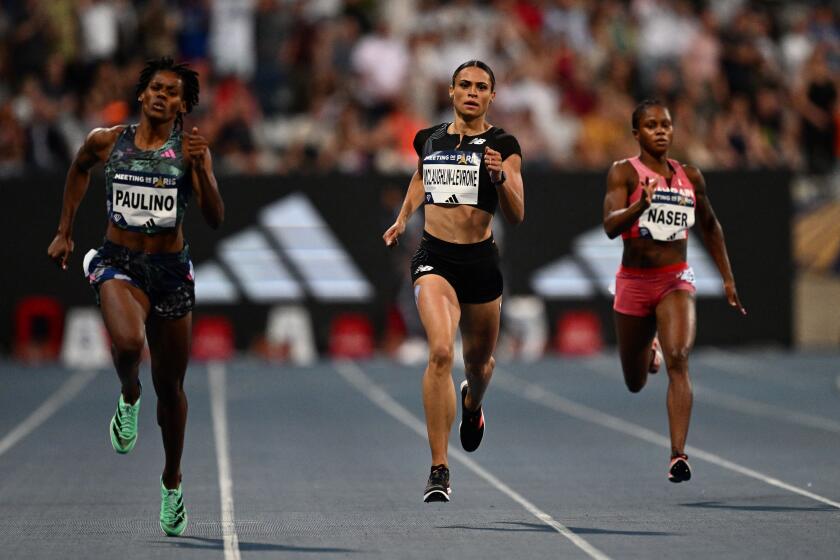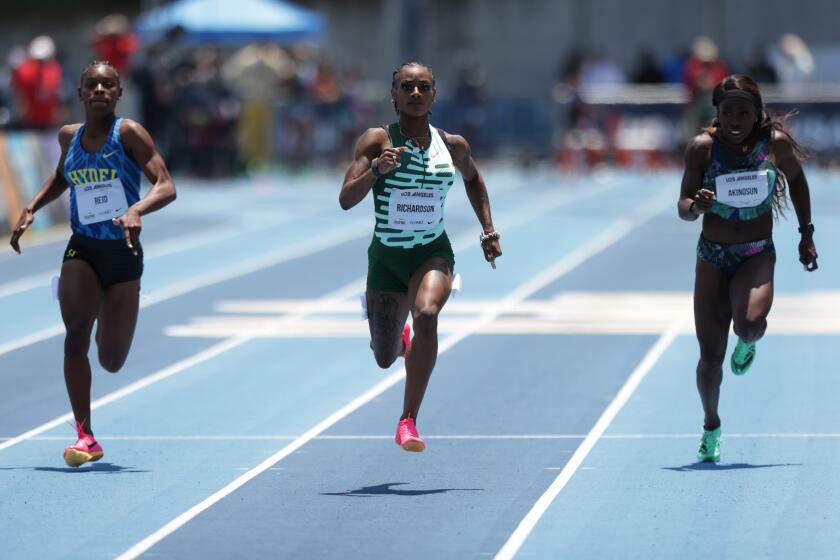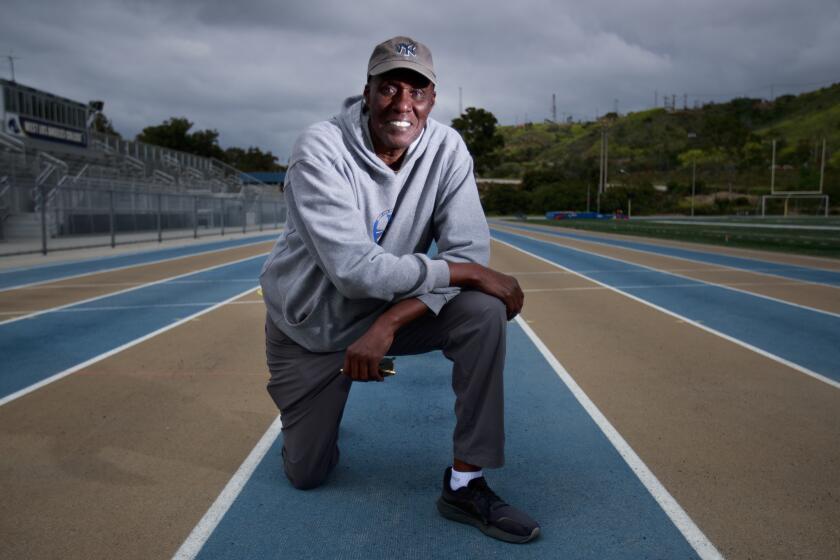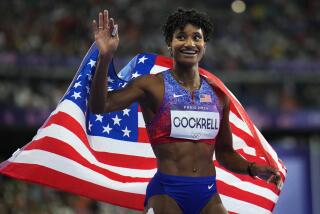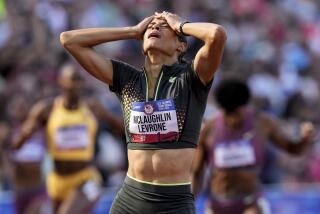Column: How ‘a big, drastic change’ led steeplechaser Colleen Quigley to the triathlon
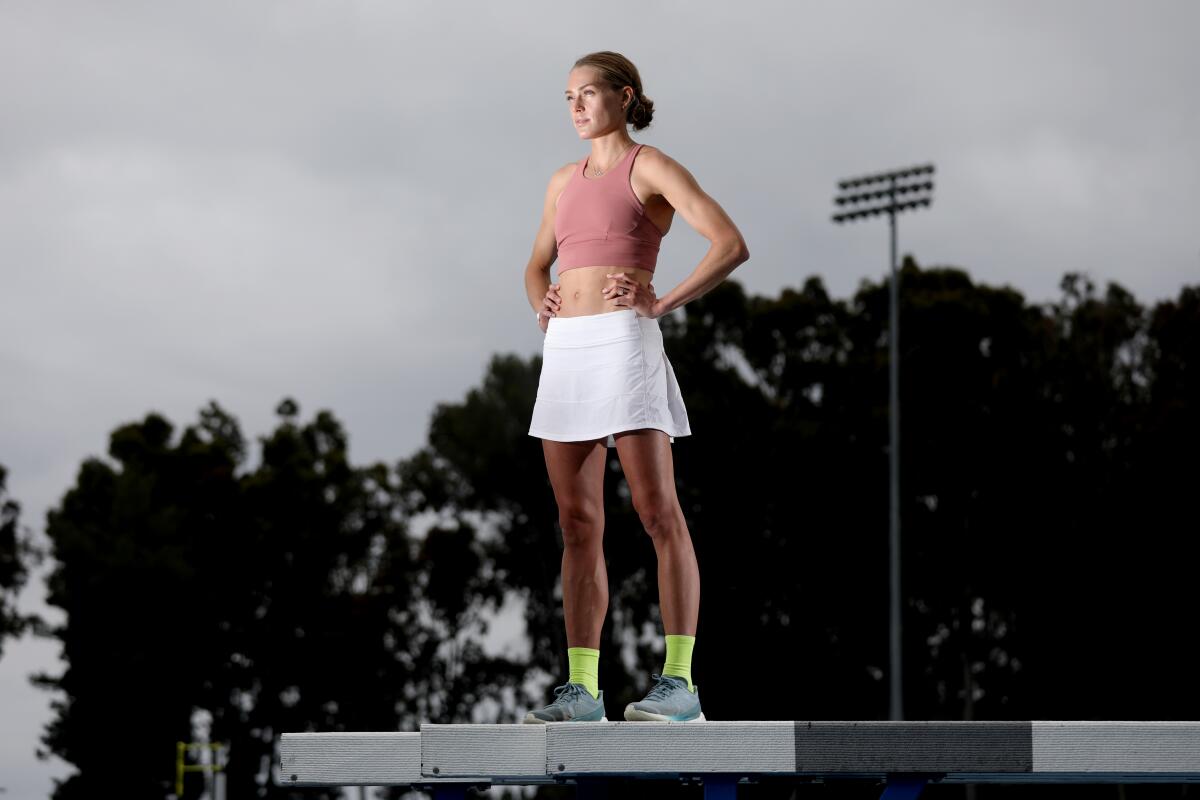
Something had to change. That became clearer with each of the frustrating injuries middle-distance runner Colleen Quigley suffered not long after she had made the U.S. team for the 2016 Rio Olympics and finished eighth in the 3,000-meter steeplechase.
From 2018 through 2021 she couldn’t string together more than eight or 10 weeks of consistent training. “I just started breaking down all the time,” she said. But there were risks to leaving the familiar — the famed Bowerman Track Club in Oregon — for the unknown. Quigley, the 2019 U.S. indoor mile champion, was accustomed to routines and group workouts. Where could she go to find that — or something better?
Around the same time, her contract with Nike was expiring. The company had subjected her to pay cuts if she didn’t rank in the top 10 in the world or hit an annual quota of races, and her injuries diminished her value to them. With so much thrown at her, she lost the joy that had inspired her to set aside her modeling career to run at Florida State and specialize in the grueling steeplechase, with its 28 hurdles and seven sloshy water jumps.
“It was kind of a perfect storm of all these things that made me feel like I had to make a big, drastic change,” she said.
Sydney McLaughlin-Levrone, the reigning world champion in the 400-meter hurdles, finishes second in the open 400 at a Diamond League meet in Paris.
Where to move was an easy choice. Quigley’s fiance, Kevin Conroy, was managing an investment fund in Southern California that focuses on solar energy, so they settled in Venice after nine years of a long-distance relationship.
“I’m 30 and I felt like I was still in college in a lot of ways,” said Quigley, who also bought a home in Flagstaff, Ariz., to train at altitude. “I hadn’t really grown up and I wanted to live my life the way I wanted to, instead of putting that off for later.”
The “what” part was murky until a detour toward another sport carried her back to the track.
While swimming and biking to stay fit through her injuries, she impressed friends with her power on the bike. They encouraged her to try a triathlon. She was open to it. “I was just: ‘Mentally, I cannot keep doing this. I’m just so tired of being injured,’ ” she said. “I got desperate enough that I had to figure out if this triathlon thing was a joke, or if I could be good at it.”
Boosted by an immersive weeklong USA Triathlon camp last July, Quigley won a Tritonman triathlon in San Diego in February and got her pro card. The victory paid a double bonus: It reassured her she could run again, and it established the triathlon as an option on her horizon.
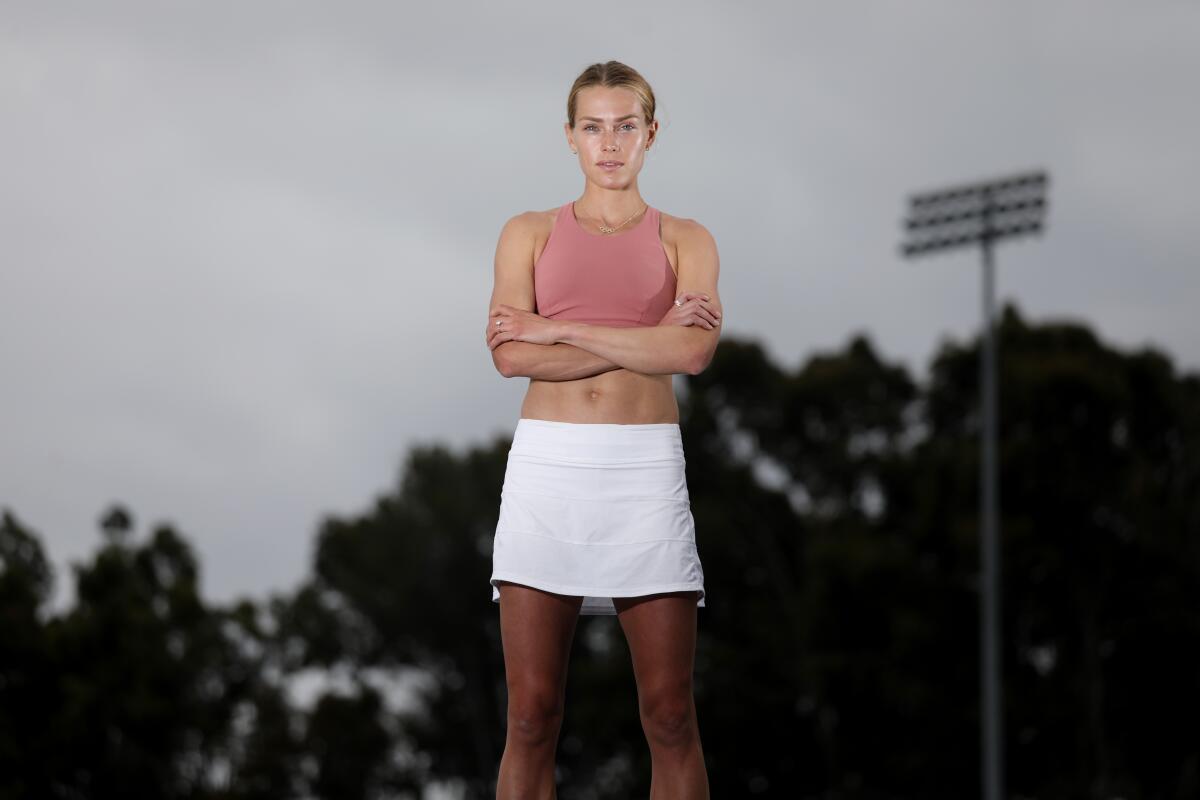
A year after breaking her foot in the first round of the U.S. track and field championships, a healthy Quigley will return to the steeplechase at the national meet next month. The St. Louis native, who trains solo at UCLA’s Drake Stadium and at Westside beaches and parks, hopes to make the U.S. team for this year’s world championships and for the 2024 Paris Olympics.
After that, “Steeple Squigs,” as she’s known on social media, plans to plunge into triathlon training. She’s too late to qualify for the Paris triathlon, so she’s aiming to compete in the swim-bike-run event at the 2028 Los Angeles Olympics.
“That would be so fun,” she said after a recent workout at UCLA, where she shared the track with Olympic 800-meter champion Athing Mu and a few recreational runners. “Once you’ve been to the Olympics once, it’s kind of like, Olympics or bust after that.”
Quigley opened her season in April by finishing fourth in the U.S. road mile championships in 4 minutes, 30 seconds. She ran her first track race at the L.A. Grand Prix in May, covering the 1,500-meter run in 4:10.59 to finish third in the “B” race. In early June she won the steeplechase at the Portland Track Festival in 9:32.48, meeting the minimum standard to compete in the U.S. championships.
The L.A. Grand Prix was hoping to have more star power on display as it tries to help make track and field more popular ahead of the 2028 Olympics.
Eager to avoid another injury or setback, she has been cautious with her training and racing. But she’s optimistic the only hurdles remaining in her path will be steeplechase barriers.
“Running is so hard. But when you’re in shape and running well, it feels like your body is just clicking and everything is moving right and you feel strong,” she said. “There’s just nothing like that. I haven’t felt that in so long. It feels like this is what my body was meant to do.”
Quigley still bikes and swims for the non-impact benefits. Although she’s focused on running, her coach, Greg Mueller, has a triathlon background. That helps him balance her workouts and prevent her from overtraining, which she believes contributed to her past hamstring and foot problems.
“I was doing a lot of cross-training, but I was in charge. My previous coach knew nothing about that. He would just say, ‘Cross train,’ ” she said. “It would literally be that, and I’d have to figure out, what does that mean and how do I optimize that? Looking back, that was really just an unprofessional way to train, not having anyone guide me in that area.”
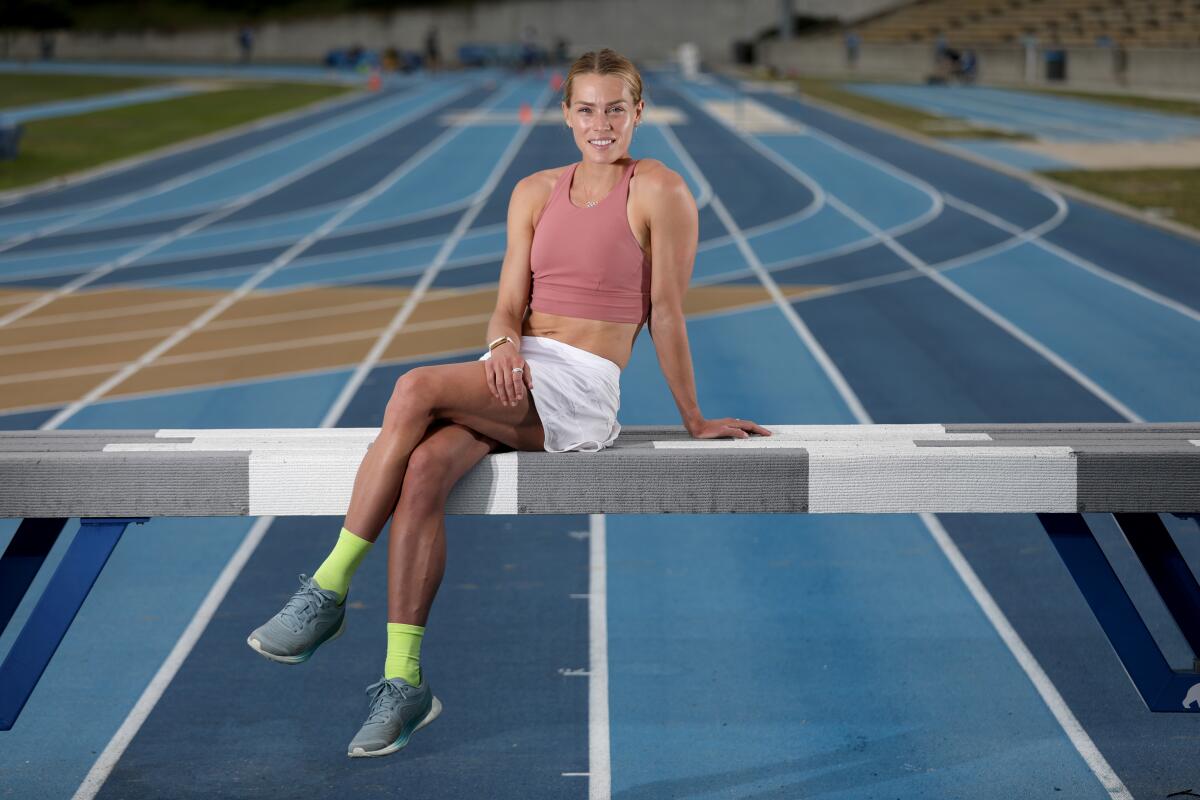
She’s the rare runner who doesn’t obsess over weekly mileage. She leaves that to Mueller, trusting him to calm her Type-A tendencies. She also doesn’t obsess over counting calories, though she has experienced disordered eating, which is eating less or in an unhealthy fashion to compensate for her lack of activity when she was injured.
She’s among more than 40 athletes interviewed in the 2023 documentary “Running for Their Lives,” which discusses RED-S (Relative Energy Deficiency in Sport) and the problems it can cause for bone density and women’s reproductive health.
“I probably prolonged my injury because I wasn’t giving my body the nutrients and rest it really needed when it was trying to heal,” she said. “During that time it’s hard to see, but later I could look at pictures of myself or look at my training log and be, ‘Dang, I was really being silly.’ It was just not a healthy way to live. It’s a subject that’s not talked about a ton. Be as honest and forthcoming as you can be about what you experienced and it would be really helpful for other people, young women especially who might be kind of tempted by this.”
A dietetics major at Florida State, Quigley likes to visit farmers markets and has learned to “shop around the edges of the grocery store where everything is fresh and you actually have to chop and saute and boil and bake things to make food. It’s not just take off the plastic and put it in the microwave and two minutes later you have dinner,” she said. “I really feel that to fuel yourself and feel good about food, it’s all part of the relationship.”
Bobby Kersee has helped transform Sydney McLaughlin-Levrone, Athing Mu and many others into champion runners — and he shows no signs of slowing down.
She’s in a good place now, geographically, competitively and as an ambassador for athletic wear company Lululemon. The company didn’t put performance-reduction clauses in her contract, and its emphasis on community and inclusiveness fit her evolved perspective that there’s life beyond athletic success.
“Those things are fun and I still want to do them, but there has to be something bigger than that. Otherwise, what’s the point?” she said. “Just so you can win a medal that gets dusty in a sock drawer? It has to mean something more than that, so I feel that was a natural progression in my own career and it made sense that the brands that I work with are seeing that, too, that they value the same thing.”
The competitive drive that sustained her through her injuries remains strong. “At some point it won’t be there and I’ll be, ‘OK, it’s time to move on,’ ” she said. “But as long as that’s still there, I’m going to keep seeing what I’ve got left.” For the foreseeable future she has miles to run, to bike and to swim.
More to Read
Go beyond the scoreboard
Get the latest on L.A.'s teams in the daily Sports Report newsletter.
You may occasionally receive promotional content from the Los Angeles Times.

